 ST-STAFF
.
March 07, 2025
.
Features
ST-STAFF
.
March 07, 2025
.
Features
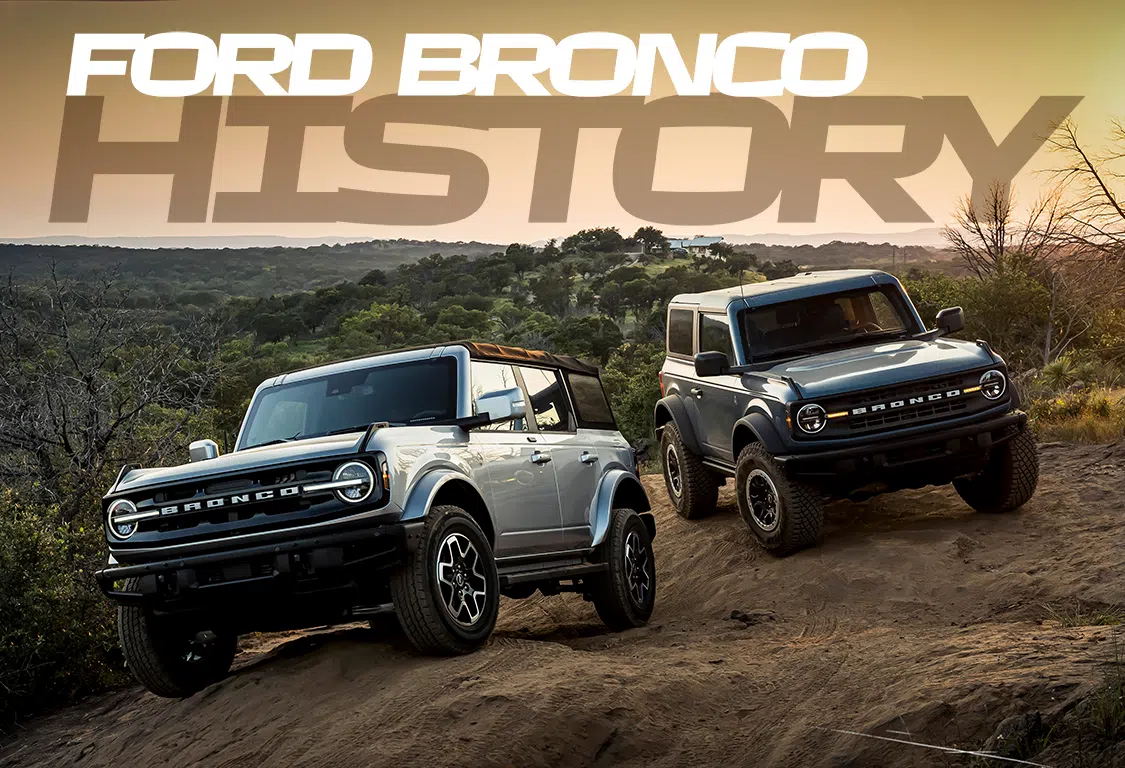
With the introduction of the 2021 Broncos, Ford produced a 4-door Bronco for the first time in the model’s history. Engine choices include turbocharged 4- and 6-cylinder engines.
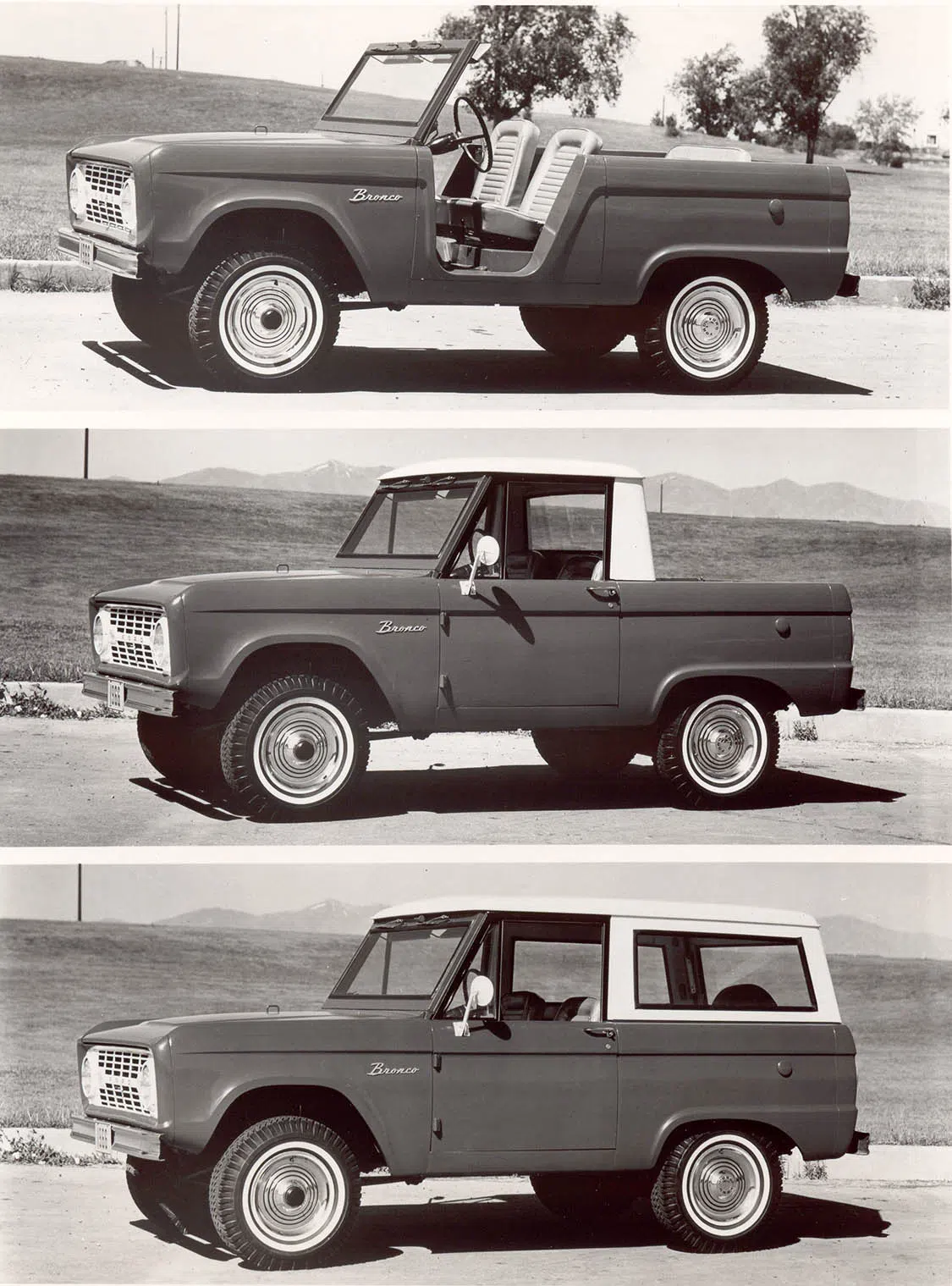
While the Ford Bronco wasn’t the first sport utility vehicle when it was introduced for the 1966 model year, Ford could legitimately lay claim to building one of the first true SUVs over 20 years earlier.
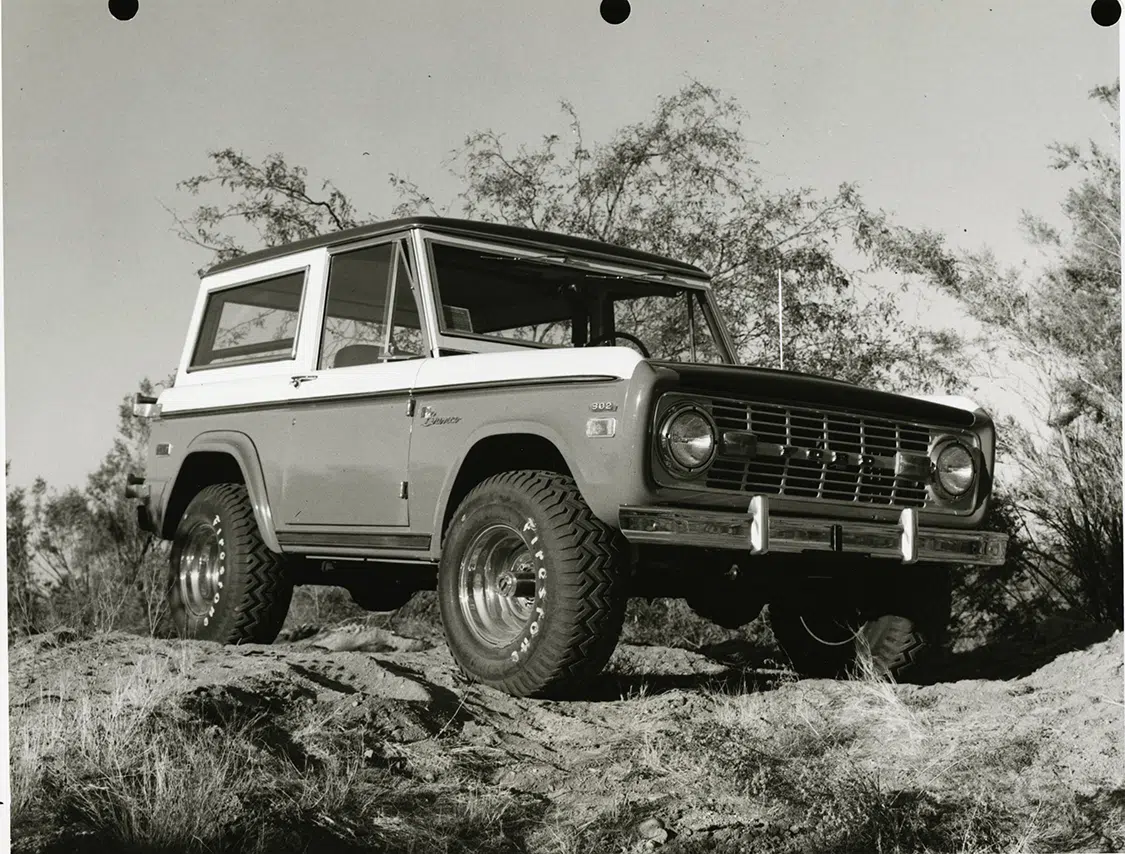
That ancestor is what we today generically refer to as the “World War II Jeep.” And although most people think of Willys when they think of Jeeps in that conflict, Ford manufactured nearly half of all the quarter-ton 4WDs that served in the war. It was the general public’s experience with surplus WWII Jeeps that started the 4WD craze in the U.S. in the late 1940s and 1950s.
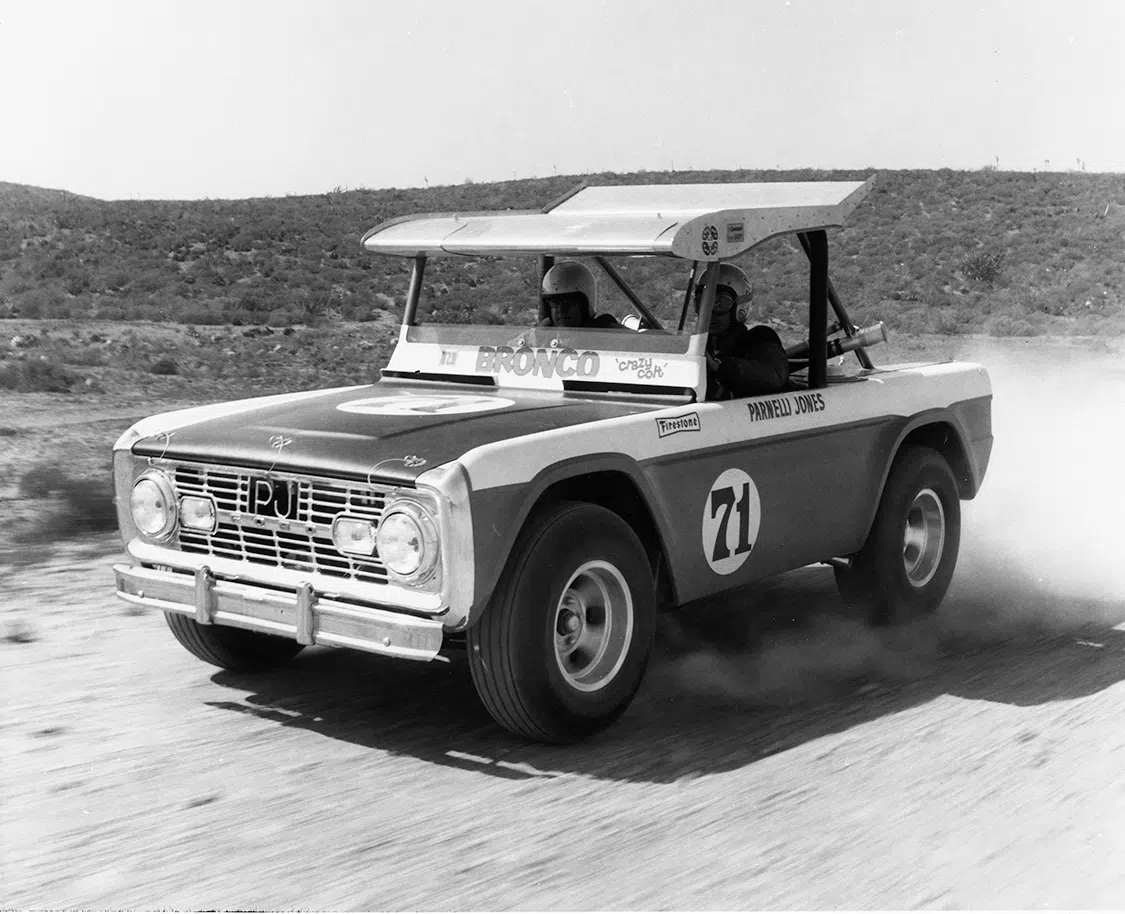
By the early ‘60s, the market included various Jeep models, Toyota FJ40, Land Rover, and the International Scout. When Ford decided they might want to enter the segment, then selling less than 40,000 units each year, they decided to take a poll of 4WD club members and see what features they might like to see in a new 4WD vehicle. Not surprisingly, those owners of the early vintage 4WDs had aged a few years and wanted a few more creature comforts in their rigs, like hardtops, heaters, radios, and better highway manners.
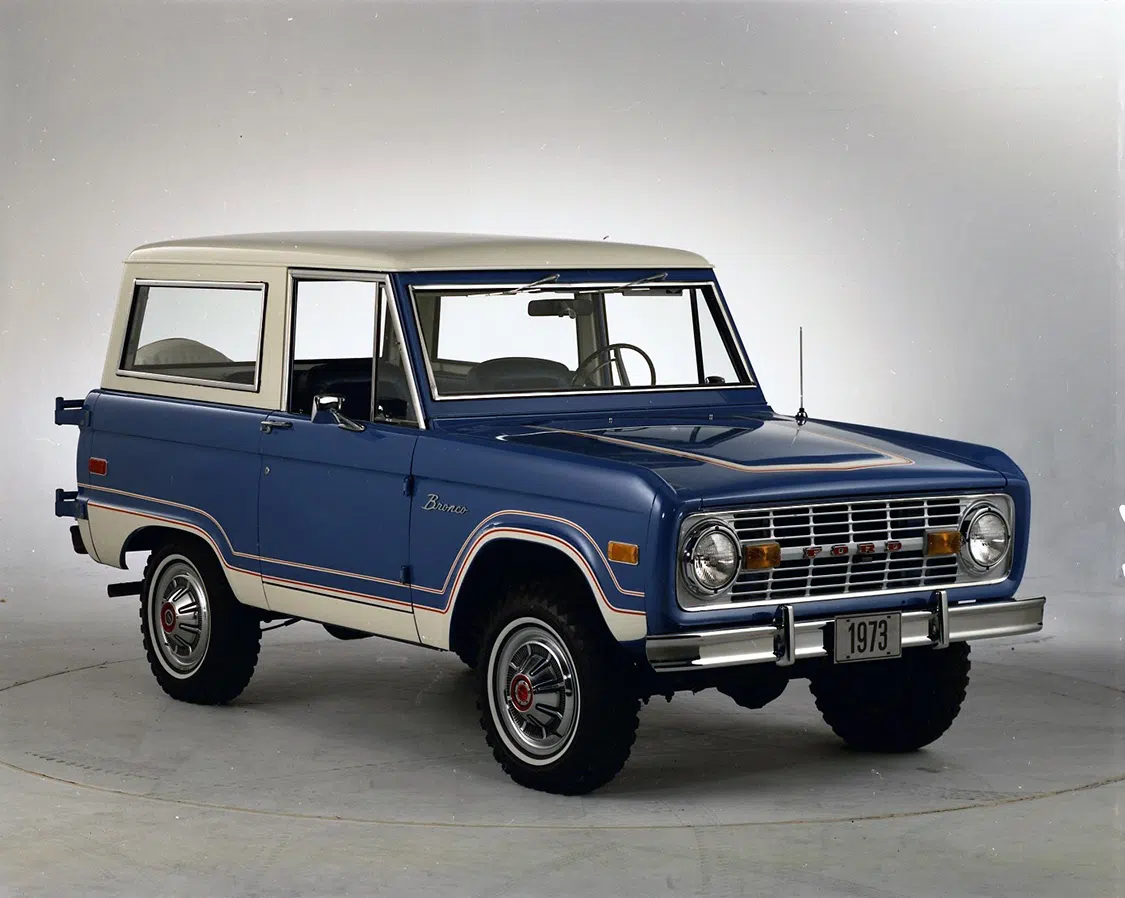
Ford introduced the Bronco on August 11, 1965, as a 1966 model. Offering three different models: roadster, Sports Utility (half cab), and wagon, Ford incorporated the results of that public polling into the Broncos. In place of the competition’s front leaf springs, Ford installed coil springs located by forged radius arms, which offered a better ride and a tighter turning radius. The ‘straight-thru’ design of the Dana 20 transfer case offered less drivetrain noise, and the trucks came equipped with amenities like radios and heaters. The initial power choice was limited to an Econoline-derived 170 c.i. six-cylinder, but the popular 289 V8 was added 10 months later; the first V8 offering in the small 4WD market. The only transmission available was a column-shifted 3 speed manual. While sales were modest by today’s standards, they increased the total sales of the segment by 50% in its first year.
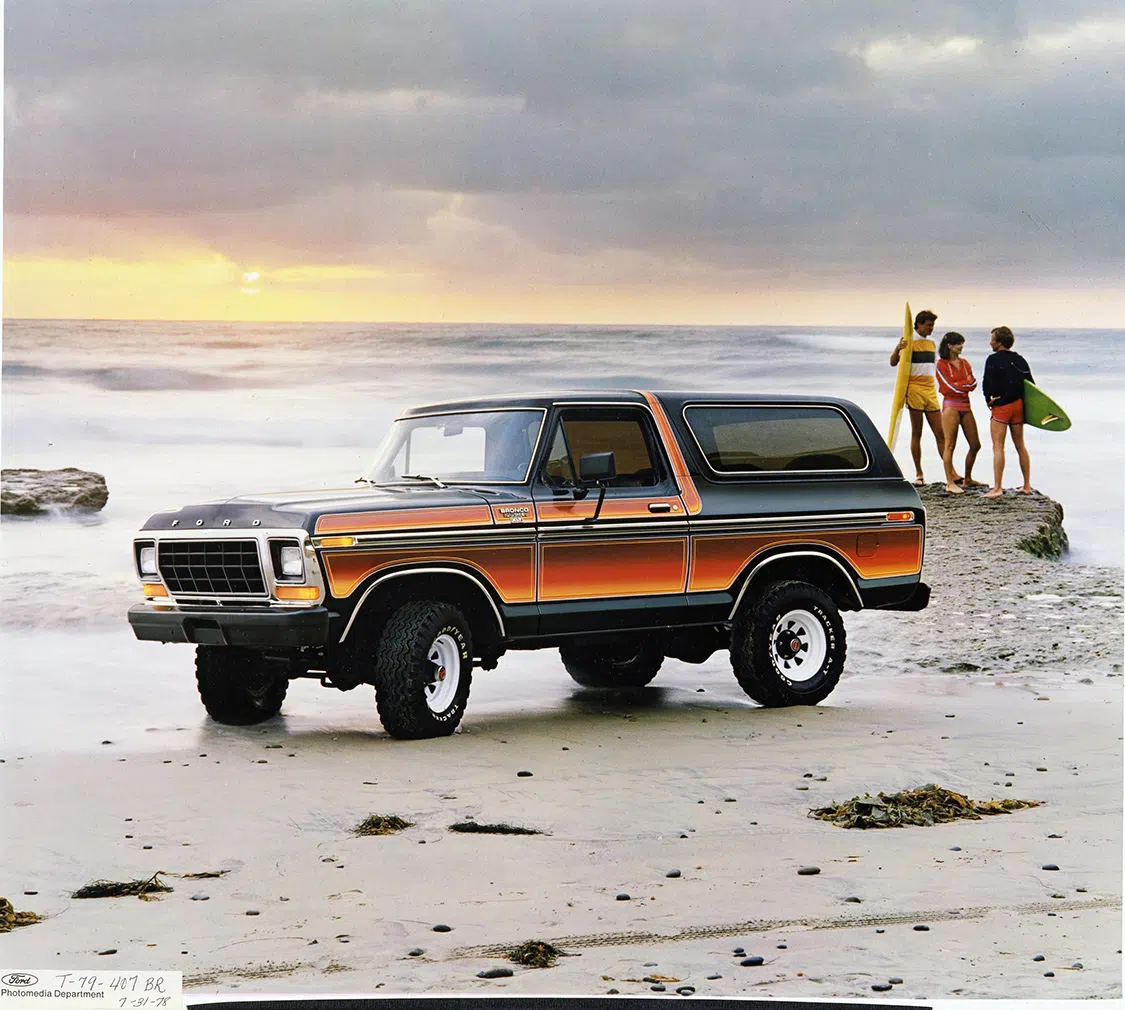
The Bronco quickly became a favorite of outdoorsmen, small business owners, off-road racers, and as a second car for families that enjoyed outdoor activities. For the 1967 year, the Sport Bronco package joined the lineup – adding bright exterior trim along with a more upscale interior treatment. The roadster, which was the bare-bones model and the most direct competitor to the Jeep CJ-5, was cancelled after only 3 years of production.

For the next 6 years, not much changed with the Bronco. In 1969, the 302 engine replaced the 289 as the V8 in the lineup and the Dana 44 front axle replaced the Dana 30 for 1971. Competition for the Bronco was growing every year. The introduction of the Chevy Blazer for 1969 and the International Scout II in 1972 revealed the Bronco was starting to show its age. Power steering and an automatic transmission were finally introduced for the 1973 model year, adding greatly to the drivability while the new Ranger trim package added some much-needed luxury and refinement. Power disc brakes arrived in 1976, making the 1976-1977 some of the most popular of the 12 model years of the so-called Early Bronco.
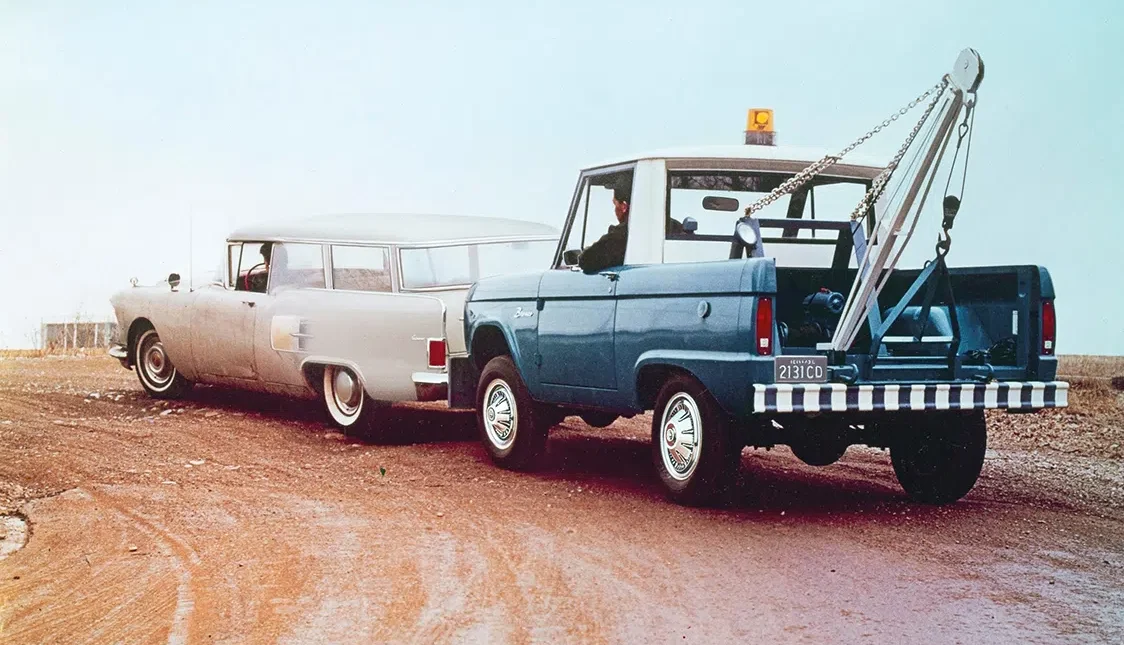
For 1978, Ford finally introduced the full-sized Bronco that they had initially developed six years earlier. The larger truck offered a great many amenities not offered in the first-generation trucks and thus was finally a worthy competitor to the Blazer/Jimmy and Ramcharger/Trailduster twins. Powertrains included either the 351M or 400 V8 engines backed by the C6 3-speed automatic transmission or the NP435 4-speed transmission. Air conditioning, cruise control, quad front shocks, more comfortable seating, and greatly increased interior space were just a few of the new features that made the 1978-1979 trucks so popular with buyers. And they responded accordingly, with the short run of the second-generation Broncos having the greatest sales years of all Broncos… until the arrival of the 6th generation trucks.
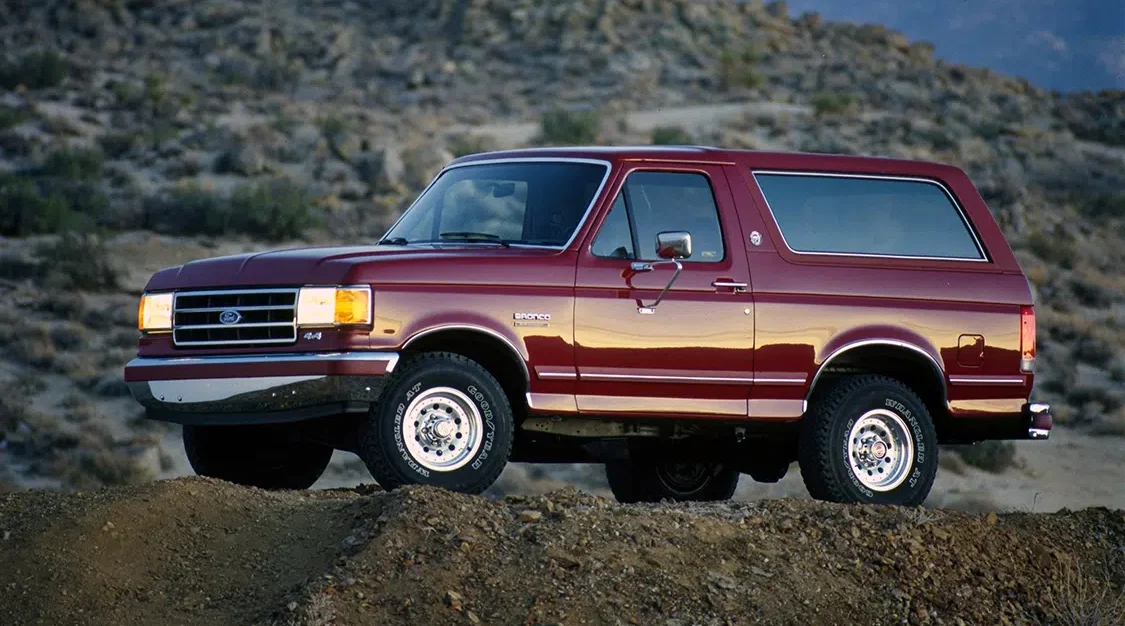
Because of the delayed introduction of the 1978 Bronco, the development of the next generation Bronco was not far behind, and for 1980, the third generation Bronco debuted. The 1980 Bronco was hundreds of pounds lighter than its predecessor, more aerodynamic, and offered more fuel-efficient power plants, including the return of a six-cylinder engine after a 6-year absence. The biggest change was in the drivetrain, where a new independent front suspension system called Twin-Traction Beam (TTB) was introduced. The first independent suspension system in a full-size SUV, it offered a better ride and a lower ride height than the previous solid axle. More luxury found its way into the interiors for this generation with the addition of optional power windows, tachometer, and the introduction of the Eddie Bauer trim package in 1984, which offered plush upholstery, thick carpets, and beautiful paint schemes. In 1985, Ford added electronic fuel injection on the 302 V8 (5.0), and also offered an automatic overdrive transmission.
Over the 50-plus years since its introduction, the Bronco has proven to have an enduring appeal to many generations of outdoor and off-roading enthusiasts.
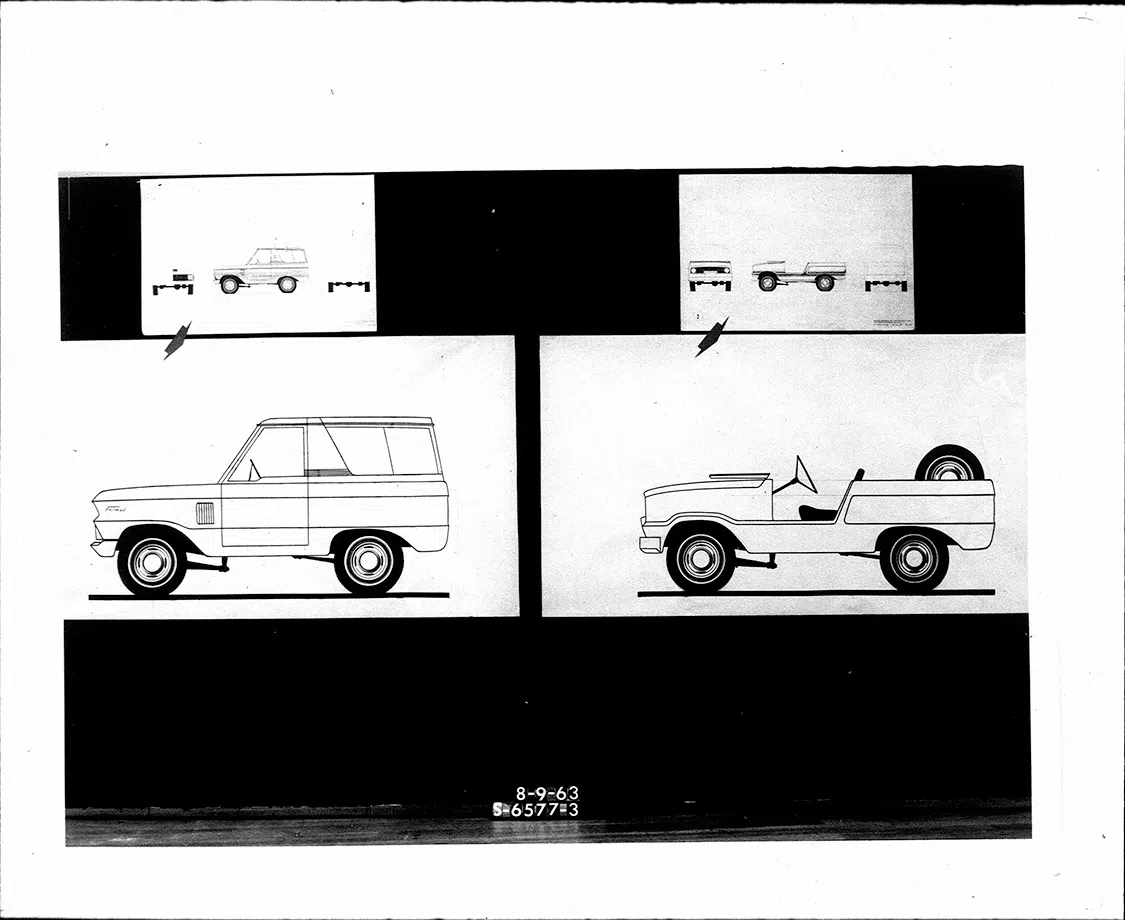
Aerodynamic styling was big in the mid ‘80s and it’s no surprise that the 1987-1991 Broncos were smoother and more aerodynamic than their predecessors – both inside and out. Other than the smoothed sheet metal and aero headlights, not a lot changed for the generation now known as the “bricknose” Broncos. A 5-speed manual transmission became standard for 1988, the rest of the engines in the lineup gained EFI by 1988, and a heavier duty automatic overdrive (E4OD) replaced the C6 automatic for 1990. For 1991, Ford introduced a limited-edition Silver Anniversary Bronco. Available in one color – Currant Red – the 25th Anniversary trucks were basically a trim package with an emblem on the B-pillar and some swag for the owner. An even rarer model for 1991 was the Nite model – which featured black paint, blacked out trim and a vivid purple stripe and badging.
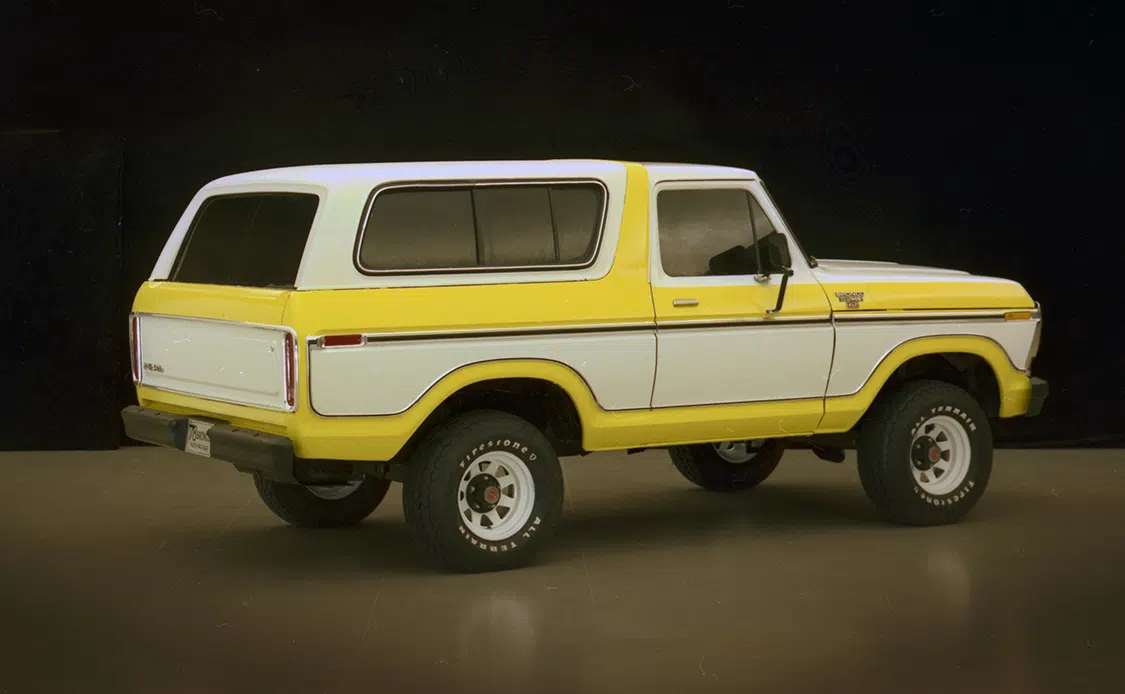
The Nite continued for 1992 when the 5th generation Broncos were introduced. Today the 1992-1996 Broncos are often known as the OBS or ‘aero’ Broncos. Featuring slightly refined body styling, this generation added even more luxury and safety with 4-wheel anti-lock brakes, outboard 3-point belts for the rear passengers, leather seating surfaces, and a driver-side airbag, transforming the Bronco’s interior. Carrying some of the most beautiful paint schemes ever applied to a Bronco, these trucks in excellent condition are commanding top dollar in today’s market.
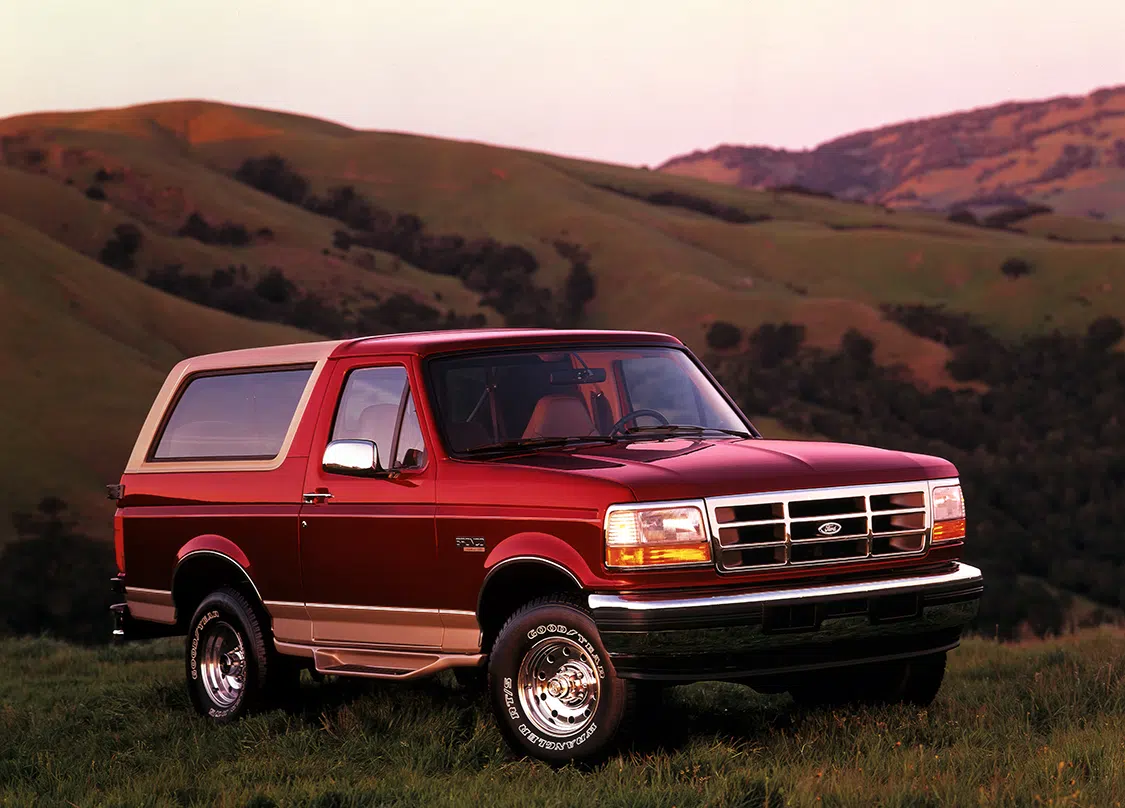
On July 13th, 2020, after an absence of nearly 25 years, the 6th generation Broncos were introduced to the public. This time, there were two distinct models – the Bronco and the smaller Bronco Sport, and for the first time ever, 4-door Broncos. Engine choices included turbocharged 4-cylinder and 6-cylinder engines. In the years since its introduction, the new Bronco has proven to be a sales hit and one of the most popular new vehicles on the road today.
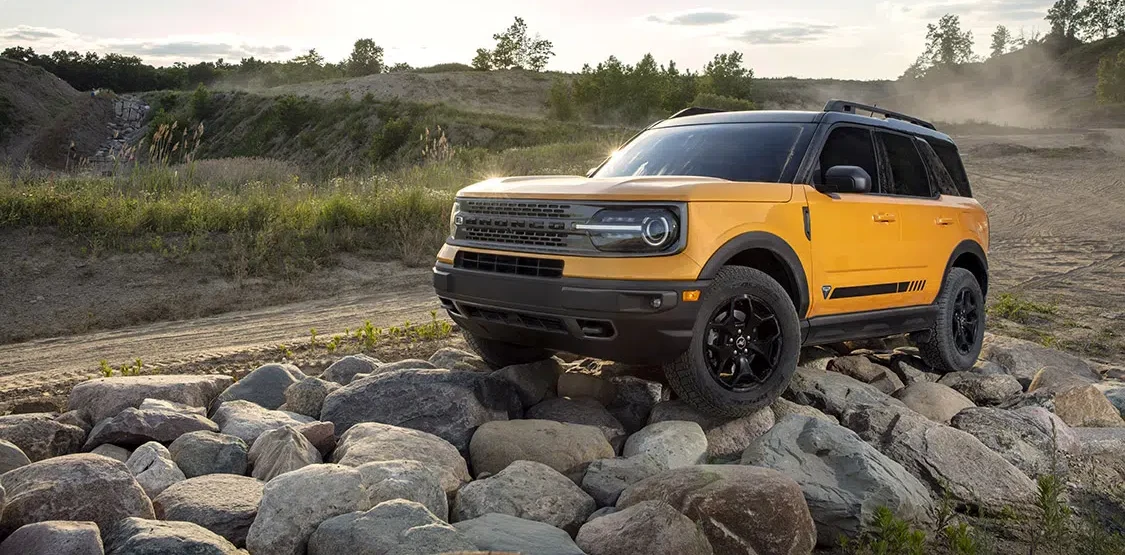
Over the 50-plus years since its introduction, the Bronco has proven to have an enduring appeal to many generations of outdoor and off-roading enthusiasts. With the advent of and popularity of the new 6th generation trucks, that appeal is destined to continue for many years to come.
Share Link